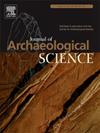一切归于自然(NOWA):优化古代牙齿采样的方案
IF 2.6
1区 地球科学
Q1 ANTHROPOLOGY
引用次数: 0
摘要
通过将创新的科学技术应用于古人类遗骸,考古科学取得了进步,并日益改变着对过去的研究。对生物考古学或古生物学标本的破坏性分析,如牙齿组织学、牙齿矿化组织的同位素或元素分析、14C 测定、蛋白质组分析或古 DNA 等,越来越多地被应用于获取更加精细的过去生活史。与空间分辨分析相结合,矿化牙齿组织,尤其是珐琅质,已被证明是理想的档案。这些技术的主要问题是需要进行一定程度的破坏性取样,从而对标本造成损害。根据 ALARA(As Low [damage] As Reasonably Achievable)原则,我们提出了一个标准化方案(NOWA 方案),用于优化组织学、生物分子和生物地球化学分析的牙齿取样,将破坏性降到最低。NOWA 方案通过对单一牙齿标本进行优化取样,确保保留大部分牙齿,并在很大程度上保留其形态,从而收集多个数据集。总之,这种方法兼顾了从此类研究中获得的重要科学见解与珍贵考古学和古生物学标本不可避免的保护要求,从而最大限度地提高了今后对需要逐个评估的单个标本进行分析的可行性。本文章由计算机程序翻译,如有差异,请以英文原文为准。
NOthing goes to WAste (NOWA): A protocol to optimise sampling of ancient teeth
Advancements in archaeological sciences through innovative scientific techniques applied to ancient human remains have increasingly been transforming the study of the past. Destructive analyses of bioarchaeological or palaeontological specimens such as dental histology, isotopic or elemental analysis of dental mineralised tissues, 14C dating, proteomic analysis or ancient DNA are increasingly being applied to obtain ever more refined past life histories. In tandem with spatially-resolved analyses, mineralised dental tissues, especially enamel, have proven to be ideal archives. The main concern with any of these techniques is the need for some level of destructive sampling and thus damage to specimens. In compliance with the ALARA (As Low [damage] As Reasonably Achievable) principle, we present a standardised protocol (the NOWA protocol) for the optimisation, in terms of minimising the destructive approach, of tooth sampling for histology, biomolecular and biogeochemical analyses. The NOWA protocol enables the collection of multiple datasets through optimised sampling of a single dental specimen, ensuring the preservation of most of the tooth and, to a substantial degree, its morphology. Overall, this approach balances the significant scientific insights from such investigations against the inevitable conservation requirements of valuable archaeological and palaeontological specimens, thus maximising the feasibility of future analyses of individual specimens that need to be evaluated on a case-to-case basis.
求助全文
通过发布文献求助,成功后即可免费获取论文全文。
去求助
来源期刊

Journal of Archaeological Science
地学-地球科学综合
CiteScore
6.10
自引率
7.10%
发文量
112
审稿时长
49 days
期刊介绍:
The Journal of Archaeological Science is aimed at archaeologists and scientists with particular interests in advancing the development and application of scientific techniques and methodologies to all areas of archaeology. This established monthly journal publishes focus articles, original research papers and major review articles, of wide archaeological significance. The journal provides an international forum for archaeologists and scientists from widely different scientific backgrounds who share a common interest in developing and applying scientific methods to inform major debates through improving the quality and reliability of scientific information derived from archaeological research.
 求助内容:
求助内容: 应助结果提醒方式:
应助结果提醒方式:


